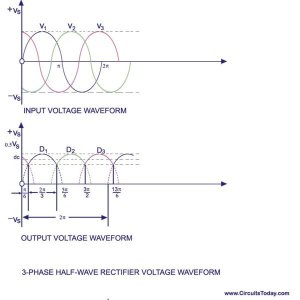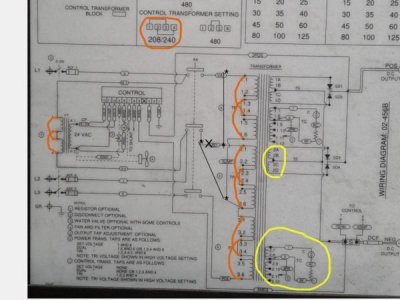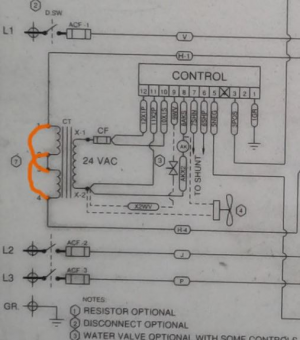- Joined
- Jul 17, 2017
- Messages
- 71
While I wait for parts for my rotary phase converter to arrive I figured out that I need to use a charger sooner than the fix will take place. Cash is tight and I am not eager to go out and buy a single phase charger when it looks like this one will do with simple mods.
Here is the schematic.
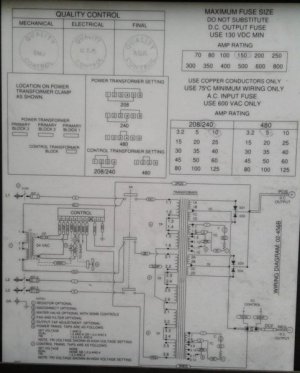
It looks like 2 legs are used for the DC power... So I am not worried about rectifier harmonics. (maybe I should be though? 120 degrees versus 180 degrees?)
I already switched it to 240V like this in orange:
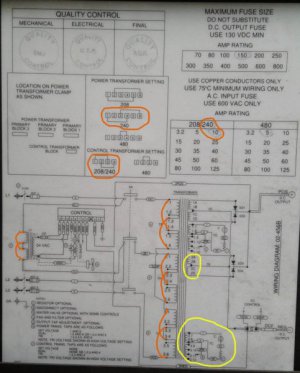 The yellow is my mystery - what effect will switching to single phase have on the 3rd leg windings?
The yellow is my mystery - what effect will switching to single phase have on the 3rd leg windings?
There are only 2 limbs on the transformer- the 3rd leg shares a limb with the 2nd leg.
The only times that I have monkeyed with going from 3 phase to 1 phase in a transformer setting were with individual (stand-alone) transformers... separated by air. So I am concerned about releasing the magic smoke if there is a 120 degree "timing" issue with the shared core.
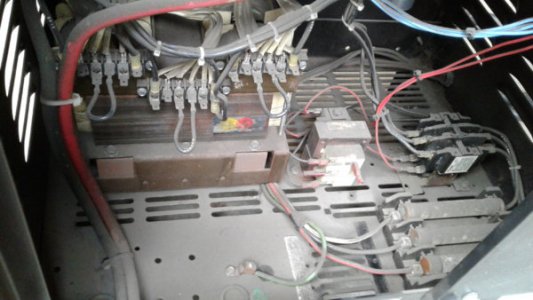 Sorry for all the dust... This is before I cleaned it.
Sorry for all the dust... This is before I cleaned it.
In the pic it is still jumpered for 480V as I was using it earlier that way.
My plan was to remove L3, and stack 3 wires on the load side of the contactor so L1 and L2 supplied each winding of the power transformer... Basically turning it into three synched single phase transformers.
But the Block 3 winding makes me want to ask someone who has seen this type of stacked winding before I ruin a perfectly good charger. L2 and L3 share the limb on the left...
Here is the schematic.

It looks like 2 legs are used for the DC power... So I am not worried about rectifier harmonics. (maybe I should be though? 120 degrees versus 180 degrees?)
I already switched it to 240V like this in orange:
 The yellow is my mystery - what effect will switching to single phase have on the 3rd leg windings?
The yellow is my mystery - what effect will switching to single phase have on the 3rd leg windings? There are only 2 limbs on the transformer- the 3rd leg shares a limb with the 2nd leg.
The only times that I have monkeyed with going from 3 phase to 1 phase in a transformer setting were with individual (stand-alone) transformers... separated by air. So I am concerned about releasing the magic smoke if there is a 120 degree "timing" issue with the shared core.
 Sorry for all the dust... This is before I cleaned it.
Sorry for all the dust... This is before I cleaned it. In the pic it is still jumpered for 480V as I was using it earlier that way.
My plan was to remove L3, and stack 3 wires on the load side of the contactor so L1 and L2 supplied each winding of the power transformer... Basically turning it into three synched single phase transformers.
But the Block 3 winding makes me want to ask someone who has seen this type of stacked winding before I ruin a perfectly good charger. L2 and L3 share the limb on the left...

